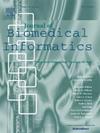ICPPNet: A semantic segmentation network model based on inter-class positional prior for scoliosis reconstruction in ultrasound images
IF 4.5
2区 医学
Q2 COMPUTER SCIENCE, INTERDISCIPLINARY APPLICATIONS
引用次数: 0
Abstract
Objective:
Considering the radiation hazard of X-ray, safer, more convenient and cost-effective ultrasound methods are gradually becoming new diagnostic approaches for scoliosis. For ultrasound images of spine regions, it is challenging to accurately identify spine regions in images due to relatively small target areas and the presence of a lot of interfering information. Therefore, we developed a novel neural network that incorporates prior knowledge to precisely segment spine regions in ultrasound images.
Materials and methods:
We constructed a dataset of ultrasound images of spine regions for semantic segmentation. The dataset contains 3136 images of 30 patients with scoliosis. And we propose a network model (ICPPNet), which fully utilizes inter-class positional prior knowledge by combining an inter-class positional probability heatmap, to achieve accurate segmentation of target areas.
Results:
ICPPNet achieved an average Dice similarity coefficient of 70.83 and an average 95 Hausdorff distance of 11.28 mm on the dataset, demonstrating its excellent performance. The average error between the Cobb angle measured by our method and the Cobb angle measured by X-ray images is 1.41 degrees, and the coefficient of determination is 0.9879 with a strong correlation.
Discussion and conclusion:
ICPPNet provides a new solution for the medical image segmentation task with positional prior knowledge between target classes. And ICPPNet strongly supports the subsequent reconstruction of spine models using ultrasound images.

基于类间位置先验的超声图像脊柱侧凸重建语义分割网络模型
目的:考虑到x线的辐射危害,更安全、更方便、性价比更高的超声方法正逐渐成为脊柱侧凸的新诊断手段。对于脊柱区域的超声图像,由于目标区域相对较小,且存在大量干扰信息,因此难以准确识别图像中的脊柱区域。因此,我们开发了一种新的神经网络,它结合了先验知识来精确地分割超声图像中的脊柱区域。材料和方法:我们构建了一个脊柱区域超声图像数据集,用于语义分割。该数据集包含30例脊柱侧凸患者的3136张图像。提出了一种结合类间位置概率热图,充分利用类间位置先验知识的网络模型(ICPPNet),实现了对目标区域的精确分割。结果:ICPPNet在数据集上的平均Dice相似系数为70.83%,平均95% Hausdorff距离为11.28 mm,显示了其优异的性能。本文方法测得的Cobb角与x射线图像测得的Cobb角平均误差为1.41度,决定系数为0.9879,相关性较强。讨论与结论:ICPPNet为目标类间具有位置先验知识的医学图像分割任务提供了一种新的解决方案。ICPPNet强烈支持后续利用超声图像重建脊柱模型。
本文章由计算机程序翻译,如有差异,请以英文原文为准。
求助全文
约1分钟内获得全文
求助全文
来源期刊

Journal of Biomedical Informatics
医学-计算机:跨学科应用
CiteScore
8.90
自引率
6.70%
发文量
243
审稿时长
32 days
期刊介绍:
The Journal of Biomedical Informatics reflects a commitment to high-quality original research papers, reviews, and commentaries in the area of biomedical informatics methodology. Although we publish articles motivated by applications in the biomedical sciences (for example, clinical medicine, health care, population health, and translational bioinformatics), the journal emphasizes reports of new methodologies and techniques that have general applicability and that form the basis for the evolving science of biomedical informatics. Articles on medical devices; evaluations of implemented systems (including clinical trials of information technologies); or papers that provide insight into a biological process, a specific disease, or treatment options would generally be more suitable for publication in other venues. Papers on applications of signal processing and image analysis are often more suitable for biomedical engineering journals or other informatics journals, although we do publish papers that emphasize the information management and knowledge representation/modeling issues that arise in the storage and use of biological signals and images. System descriptions are welcome if they illustrate and substantiate the underlying methodology that is the principal focus of the report and an effort is made to address the generalizability and/or range of application of that methodology. Note also that, given the international nature of JBI, papers that deal with specific languages other than English, or with country-specific health systems or approaches, are acceptable for JBI only if they offer generalizable lessons that are relevant to the broad JBI readership, regardless of their country, language, culture, or health system.
 求助内容:
求助内容: 应助结果提醒方式:
应助结果提醒方式:


